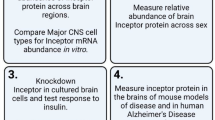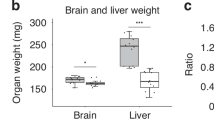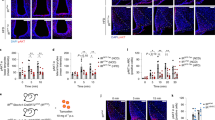Abstract
ABSTRACT: Comparison of the adult brain insulin receptor (IR) to other tissue IR demonstrates that the former migrates ∼10 kD faster on sodium dodecyl sulfate-polyacrylamide gel electrophoresis due to deficient sialic acid content of the asparagine N-linked carbohydrate moieties. We studied these receptors in the fetal rat (18-day) brain (∼125 kD) and liver (∼135 kD), and demonstrated that similar differences are present during fetal life. These differences are not modified by hyperglycemia associated with both mild hyperinsulinemia and normoinsulinemia/hypoinsulinemia. We further studied the specific brain cell types: neurons, glial cells, and purified microvessel preparation, and demonstrated a heterogeneity in the N-linked glycosylation of the IR within an organ (brain). The neuronal (∼125 kD) and microvascular (∼125 kD, ∼135 kD) IR are deficient in sialic acid, thus conferring neuraminidase-insensitivity to the whole brain, whereas the glial cell IR, similar to the liver IR, exhibits neuraminidase sensitivity and migrates intermediate (∼128 kD) to the liver and brain IR. The functional significance of this receptor heterogeneity between various tissues and cells within the same organ (brain) remains to be determined.
Similar content being viewed by others
Log in or create a free account to read this content
Gain free access to this article, as well as selected content from this journal and more on nature.com
or
Author information
Authors and Affiliations
Rights and permissions
About this article
Cite this article
Devaskar, S., Holtzclaw, L. & Sadiq, F. The Heterogeneity of the Developing Brain Insulin Receptor. Pediatr Res 24, 683–687 (1988). https://doi.org/10.1203/00006450-198812000-00006
Received:
Accepted:
Issue date:
DOI: https://doi.org/10.1203/00006450-198812000-00006



